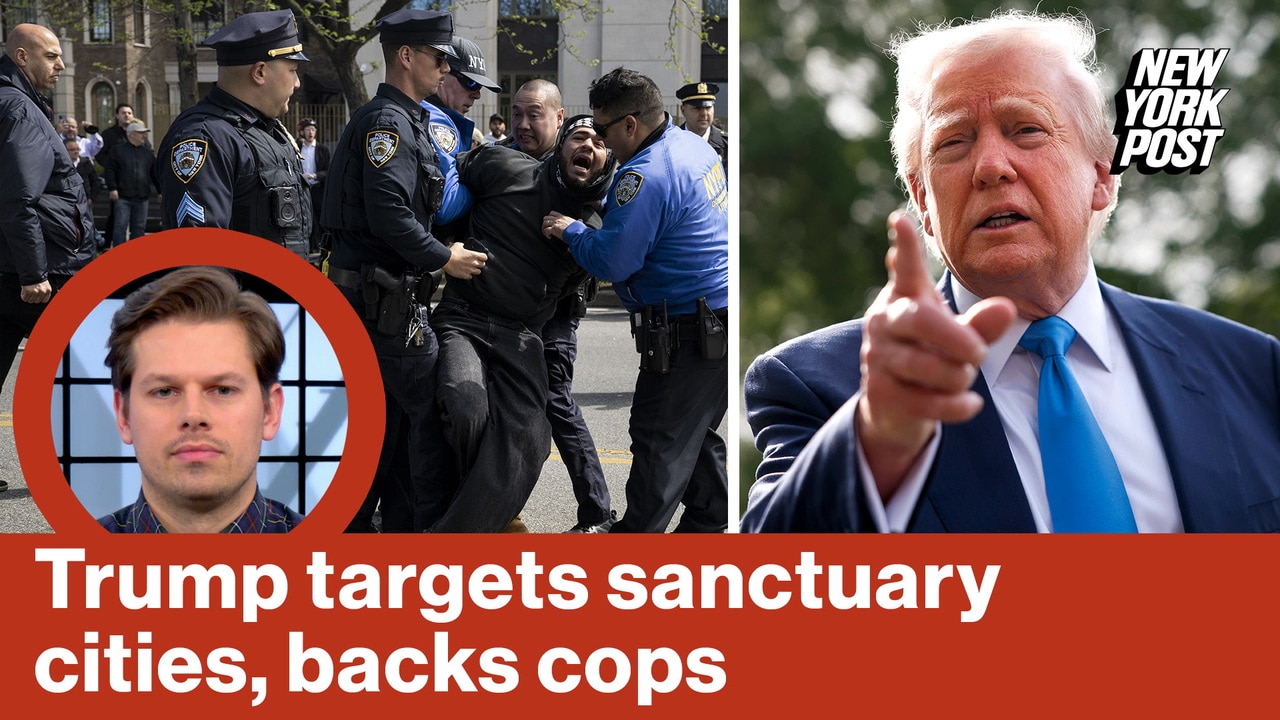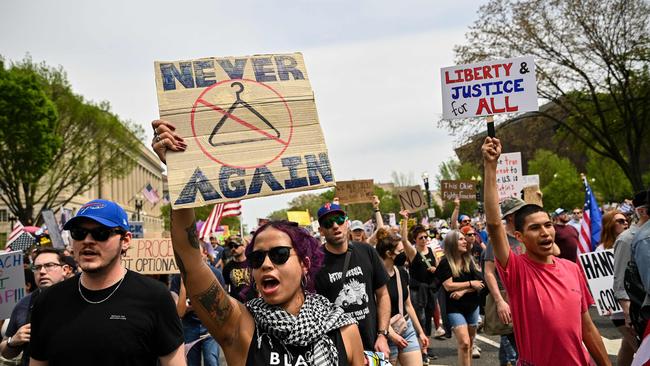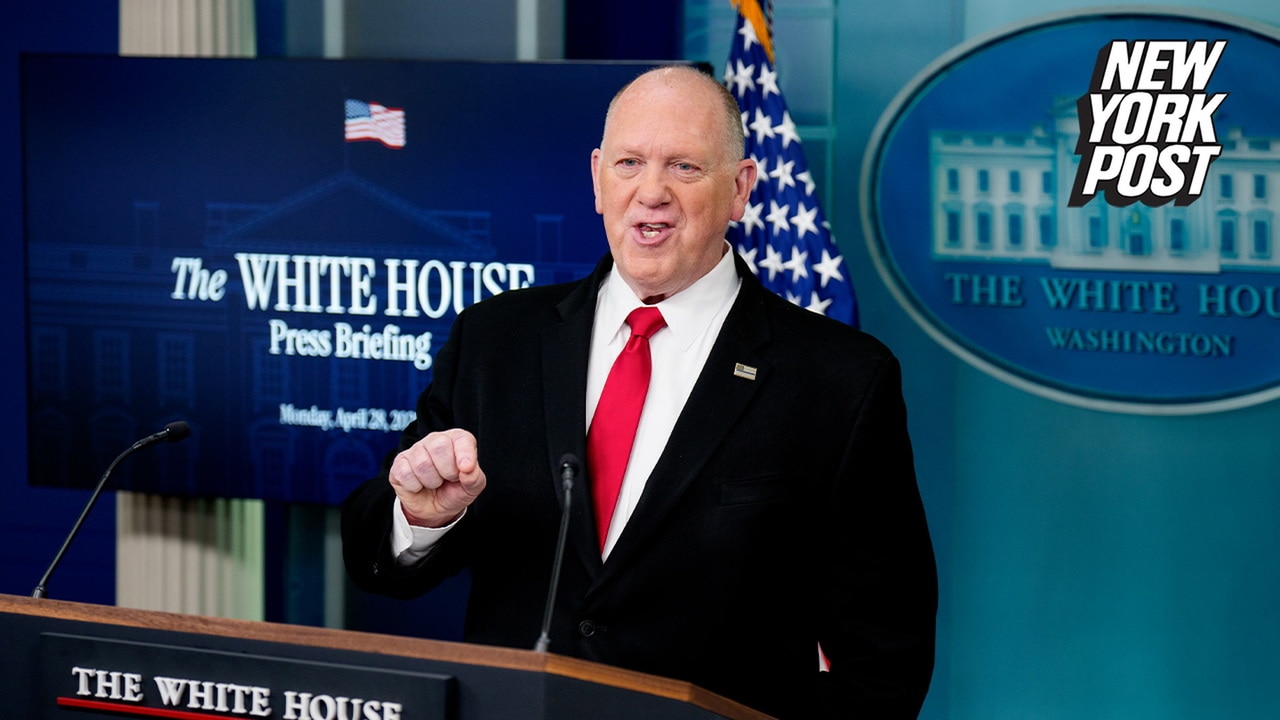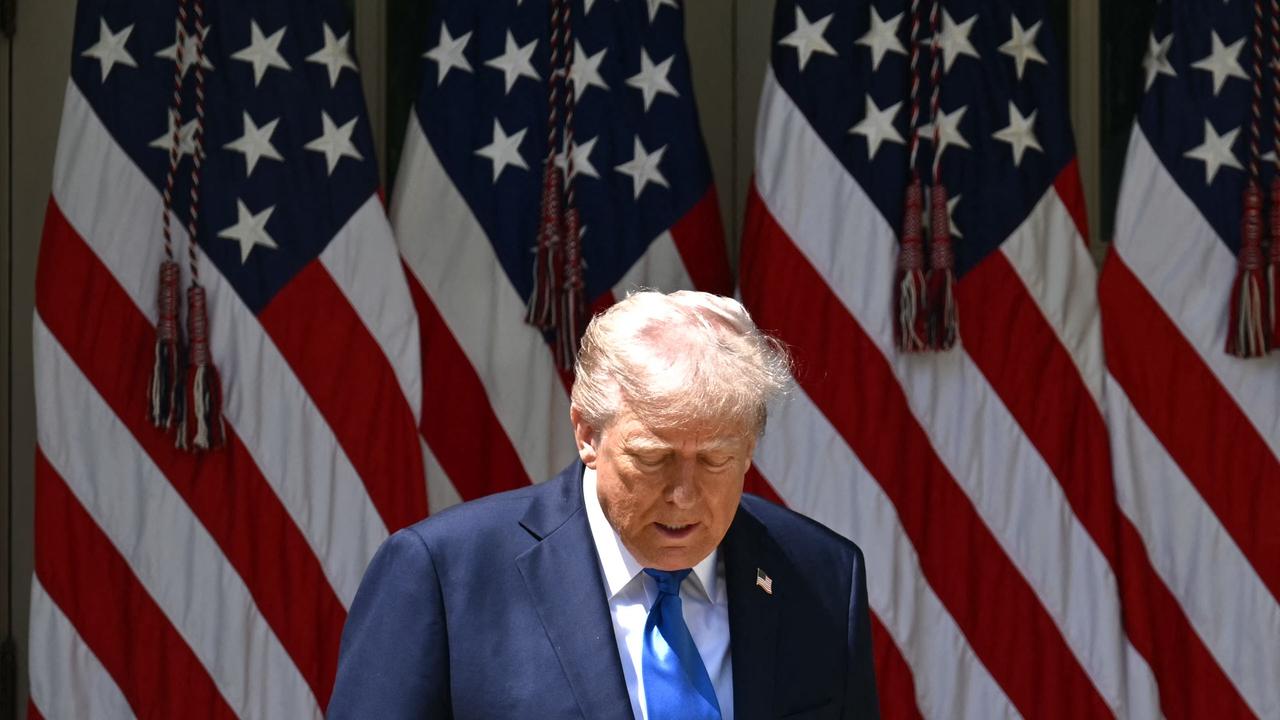Donald Trump to sign order requiring nationwide list of sanctuary cities and states
The order directs the attorney general and the secretary of Homeland Security to identify within a month cities and states that aren’t complying with federal immigration laws.

President Trump plans to sign an executive order on Monday (local time), escalating his battle against Democratic-led states and cities that don’t fully co-operate with federal immigration authorities, a key barrier to the mass deportations he has promised.
The order, which was viewed by The Wall Street Journal, directs the attorney general and the secretary of Homeland Security to identify within a month cities and states that aren’t complying with federal immigration laws, designating them as “sanctuary jurisdictions.” The cities and states on the list could face a cut-off in federal funding and possible criminal and civil suits if they refuse to change their laws or practices.
“It’s quite simple: obey the law, respect the law, and don’t obstruct federal immigration officials and law-enforcement officials when they are simply trying to remove public safety threats from our nation’s communities,” White House press secretary Karoline Leavitt said Monday at a briefing alongside Tom Homan, Trump’s border tsar.
Trump will also direct the Justice Department to pursue civil-rights cases against cities or states that, in its view, favour immigrants in the country illegally over U.S. citizens. The order cites policies that treat immigrants more leniently in criminal cases or sentencing and state laws that provide immigrants in-state tuition rates at public universities but deny the lower rates to out-of-state U.S. citizens. At least 25 states have adopted such laws in some fashion.

Sanctuary cities and states have become a major obstacle for Trump as he has sought to drive up deportations in line with his campaign pledge. Most immigrants in the country tend to cluster in large cities like New York, Chicago and Los Angeles, and the administration has a tougher time arresting those here illegally if local police refuse to assist.
The directive comes as the administration is facing legal challenges against actions it has already taken against sanctuary cities.
Last week, a federal judge in California blocked Trump’s efforts to strip federal funding from 16 counties and cities in the state, including San Francisco, under a pair of executive orders Trump has previously signed. U.S. District Judge William H. Orrick ruled the orders likely overstep the president’s authority and the constitutional requirement of due process and protections against coercion.
The ruling took issue with previous orders’ lack of specificity in defining which jurisdictions were deemed sanctuaries, an issue Monday’s executive order will attempt to skirt by requiring the Justice Department and Homeland Security to formulate a list.
Boston Mayor Michelle Wu said the executive order wouldn’t change policies in the sanctuary city. “The courts have backed us up on this as well,” Wu said on Monday. “State law in Massachusetts, city ordinances here in the city of Boston means that we are safe for everyone.” Kayla Mamelak Altus, a spokeswoman for New York City Mayor Eric Adams, said the city would balance its policies with working with the administration.
“Mayor Adams has been clear that no one living in New York City – regardless of their immigration status – should be afraid to utilise city resources, like calling 911, going to a hospital, or sending their children to school,” she said. “But we must also find ways to work with the federal government to go after violent offenders who are taking advantage of our laws to commit crimes. We will review the executive order if and when it is issued.”

The Justice Department made clear earlier this year that one of its central reasons for seeking to drop bribery charges against Adams, a Democrat, was so the mayor could help the administration’s immigration agenda.
It isn’t clear how the order Trump plans to sign Monday differs legally from previous efforts.
Along with the new order, the White House plans to highlight other immigration moves, including bringing illegal crossings at the southern border to their lowest point in decades, kicking off a week focused on Trump’s first 100 days in office.
In addition to targeting federal funding, Trump’s administration has brought lawsuits against Chicago and New York for policies that limit local law-enforcement co-operation with federal immigration officials and, in some cases, block housing of immigration detainees in local jails. The Justice Department argues federal law overrides the city and state when it comes to immigration.
On Friday, federal agents arrested and charged Judge Hannah Dugan of the Milwaukee County Circuit Court for allegedly helping a man avoid federal immigration agents, a charge she has denied.
On Monday Homan also faced questions about some of the more controversial deportations that have happened over the past few weeks, including one involving a 2-year old U.S. citizen who was sent to Honduras with her mother over the father’s objections. The government said that the mother had requested that the child be deported with her, but the judge hearing an emergency petition filed to stop the child’s deportation has questioned whether it was done over the father’s attempts to keep her in the country.
“What we did is remove children with their mother when they requested their children depart with them,” Homan said at the briefing with Leavitt. “If we didn’t do it, the story would be the Trump administration is separating families again.”
Dow Jones




To join the conversation, please log in. Don't have an account? Register
Join the conversation, you are commenting as Logout